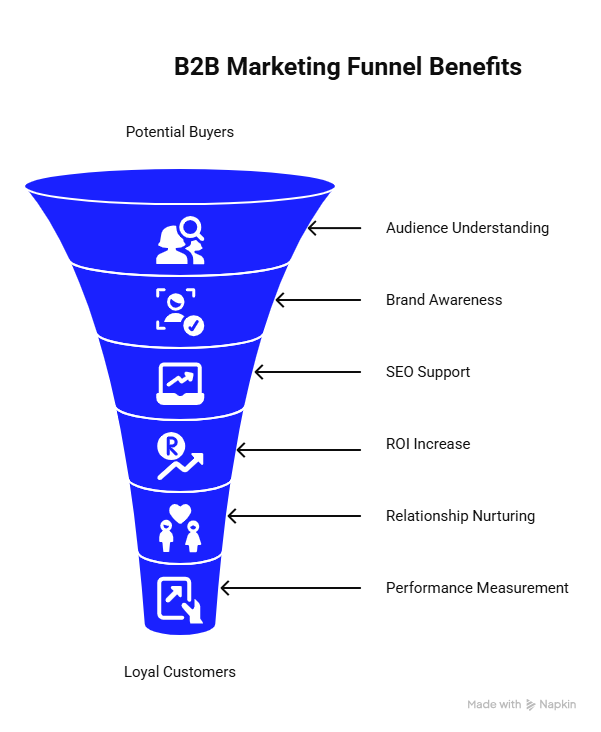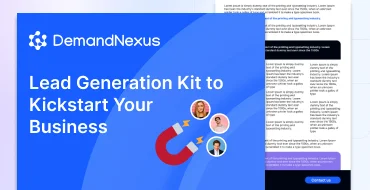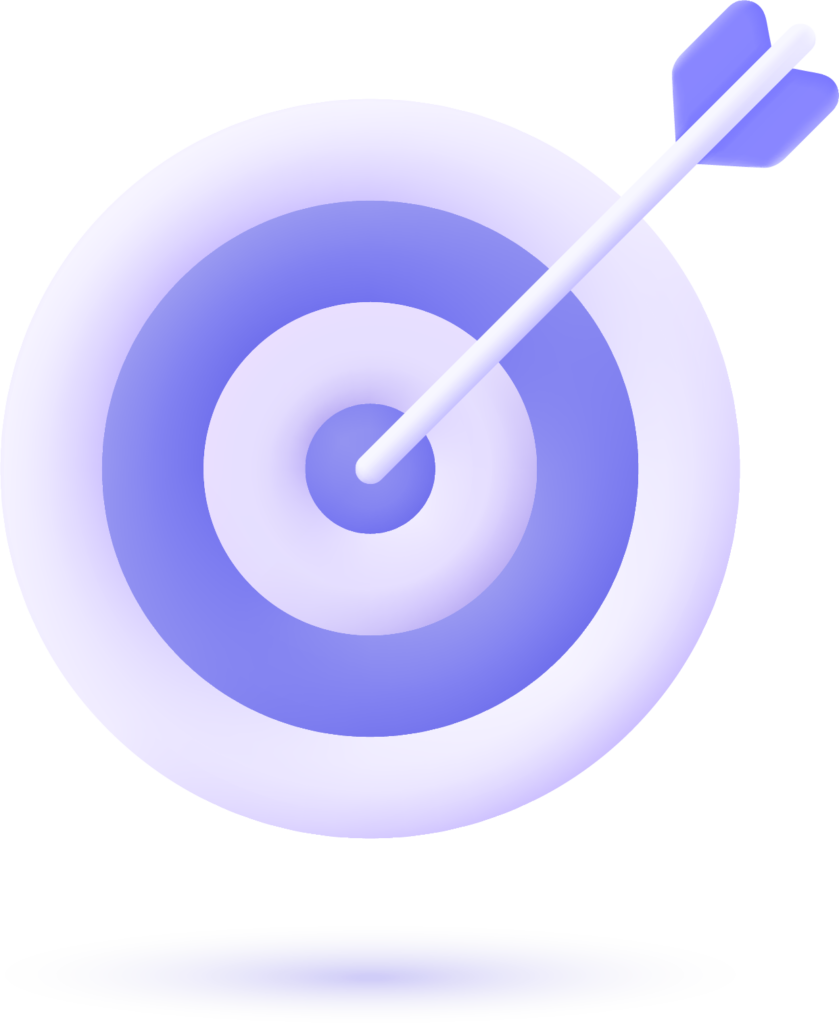What Is a B2B Sales Funnel?
A B2B sales funnel represents the journey a prospective client takes from discovering your brand to becoming a paying customer. It’s a structured pathway that aligns your sales and marketing efforts to nurture leads, address pain points, and close deals. The funnel’s primary goal is conversion, but it also enhances long-term ROI by fostering customer loyalty and retention.
At DemandNexus, we empower businesses to craft targeted funnels by leveraging data-driven insights and advanced prospecting tools, ensuring every stage of the funnel is optimized for success.
Key Stages of the B2B Sales Funnel
While every business tailors its funnel to its unique sales cycle, most B2B funnels consist of six core stages, often grouped into three broader phases: Top of the Funnel (TOFU), Middle of the Funnel (MOFU), and Bottom of the Funnel (BOFU).
- Awareness (TOFU): Prospects discover your brand through channels like social media, content marketing, or referrals. Focus on educational content like blogs or webinars to spark interest.
- Interest (TOFU): Leads engage with your brand by visiting your website or signing up for newsletters. Offer value-driven resources like eBooks or case studies.
- Consideration (MOFU): Prospects evaluate your solution against competitors. Provide testimonials, whitepapers, or product demos to showcase your value.
- Intent (MOFU): Leads signal purchase intent by requesting quotes or scheduling consultations. Personalize outreach to address specific needs.
- Evaluation (BOFU): Decision-makers compare your offering with others. Facilitate this stage with detailed proposals or trial offers.
- Conversion (BOFU): Prospects become customers by signing contracts or making purchases. Streamline the process to ensure a seamless experience.
A seventh stage, Retention, is critical for B2B companies, especially SaaS businesses, to maintain long-term relationships and maximize customer lifetime value.
Building an Effective B2B Sales Funnel
Creating a high-performing B2B sales funnel requires strategic planning and alignment between sales and marketing teams. Here’s how to get started:
1. Define Your Target Audience
Understanding your ideal customer profile (ICP) is foundational. Analyze your existing customer base, research competitors, and use tools like DemandNexus to gather firmographic and technographic data. This helps you pinpoint pain points, buying behaviors, and decision-making roles.
2. Create Buyer Personas
Develop detailed buyer personas to humanize your audience. Include demographics, job roles, challenges, and preferred channels. For example, a persona for a CFO might highlight budget concerns and a preference for LinkedIn content.
3. Conduct Market Research
Market research uncovers customer needs and competitor gaps. Use surveys, social media analytics, or industry reports to identify trends and tailor your funnel accordingly.
4. Set Stage-Specific Goals
Assign clear objectives and KPIs for each funnel stage. For instance, TOFU goals might focus on lead generation, while BOFU goals prioritize conversion rates. Track progress with tools like HubSpot or Google Analytics.
5. Align Sales and Marketing
Seamless collaboration between sales and marketing ensures a cohesive customer journey. Regular communication and shared KPIs prevent leads from slipping through the cracks.

B2B Sales Funnel Metrics to Track
Monitoring B2B sales funnel metrics is essential to gauge performance and identify areas for improvement. Key metrics include:
- Stage-to-Stage Conversion Rates: Measure the percentage of leads moving from one stage to the next to pinpoint drop-off points.
- Qualified Leads: Track the proportion of TOFU leads that become marketing-qualified or sales-qualified leads.
- Sales Cycle Length: Calculate the average time from awareness to conversion to optimize resource allocation.
- Customer Acquisition Cost (CAC): Evaluate the cost-effectiveness of your funnel by channel or campaign.
- Customer Lifetime Value (CLV): Assess the long-term value of retained customers to justify retention efforts.
Tools like Microsoft Dynamics 365 or Plerdy can automate metric tracking, providing real-time insights to refine your strategy.
B2B Sales Pipeline Management
Effective B2B sales pipeline management ensures leads progress smoothly through the funnel. Best practices include:
- Lead Scoring: Prioritize high-potential leads based on engagement and fit.
- CRM Integration: Use CRMs like Salesforce to centralize lead data and automate follow-ups.
- Regular Pipeline Reviews: Assess pipeline health weekly to address bottlenecks.
Leveraging B2B Sales Pipeline Analytics
B2B sales pipeline analytics provide actionable insights to optimize performance. By analyzing data on lead sources, conversion rates, and sales velocity, you can identify high-performing channels and allocate resources effectively. Platforms like Tableau or Power BI visualize these trends, enabling data-driven decisions.
B2B Sales Forecasting for Strategic Growth
B2B sales forecasting predicts future revenue based on historical data and current pipeline activity. Accurate forecasts help allocate budgets, set realistic targets, and plan hiring. Key steps include:
- Historical Analysis: Review past sales data to identify patterns.
- Pipeline Evaluation: Assess the volume and quality of opportunities in the pipeline.
- Market Trends: Factor in economic or industry shifts that may impact demand.
B2B Sales Forecasting Tools
Investing in B2B sales forecasting tools enhances accuracy and efficiency. Popular options include:
- Clari: Uses AI to predict deal outcomes and identify risks.
- InsightSquared: Provides detailed pipeline analytics and forecasting reports.
- Zoho CRM: Offers customizable forecasting modules for small to mid-sized businesses.
Optimizing Your B2B Sales Funnel
Continuous optimization is key to a high-performing funnel. Strategies include:
- A/B Testing: Experiment with CTAs, email subject lines, or landing pages to boost conversions.
- Personalization: Tailor content and outreach to individual buyer needs.
- Customer Feedback: Collect input via surveys or reviews to refine your approach.
- Adapt to Trends: Stay agile by updating your funnel to reflect market changes.
Enhancing Customer Retention
Retention is a cornerstone of B2B success. Tactics to boost loyalty include:
- Robust Onboarding: Assign client success managers to guide new customers.
- Cross-Selling Opportunities: Introduce complementary products to existing clients.
- Feedback Loops: Use customer insights to improve offerings and show you value their input.
Conclusion
A well-crafted B2B sales funnel is a powerful tool for converting prospects and retaining customers. By understanding its stages, tracking critical metrics, and leveraging pipeline management and forecasting tools, businesses can drive consistent growth. Start building your funnel today with a clear strategy, and optimize it regularly to stay ahead in the competitive B2B landscape.
Ready to supercharge your B2B sales funnel? Explore DemandNexus for cutting-edge tools and strategies to accelerate your pipeline and close more deals.



